- 23 April 2016
- Europe
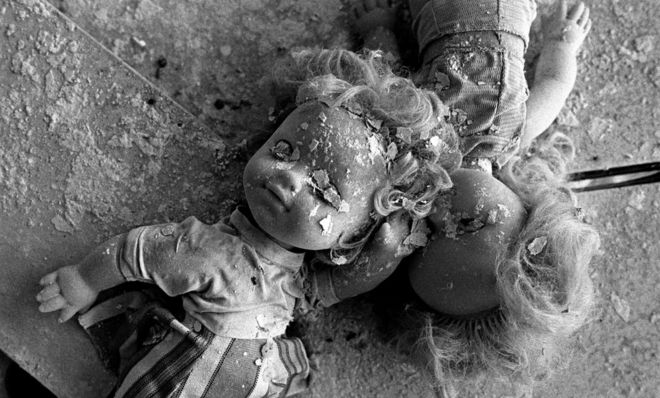 Jerzy Wierzbicki
Jerzy Wierzbicki
Thirty years after its fourth reactor exploded on 26 April 1986, an exclusion zone is still in place around the Chernobyl nuclear plant in Ukraine.
Photographer Jerzy Wierzbicki visited the zone, accompanied by two guides - former employees of the nuclear plant.
A fire raged at the plant for 10 days after the reactor meltdown, sending huge amounts of radioactive material into the surrounding environment and over large parts of Europe, particularly Ukraine, Belarus and Russia.
The area around the plant was evacuated. The exclusion zone, which extends for a radius of 30km (19 miles) around the plant, is monitored by police armed with AK-47s.
 Jerzy Wierzbicki
Jerzy Wierzbicki
In truth, the zone was never entirely vacated. Rules vary according to radiation levels.
The power plant has no permanent official residents. Workers there are allowed to stay in Chernobyl city, some 15km away, and even then only for a certain number of weeks at a time.
A little further from the plant, Maria and Ivan Semieniuk are having supper in their home village of Parishev.
At the time of the accident, they were moved out of the village, 20km from Chernobyl. The authorities told them they would be able to return three days later.
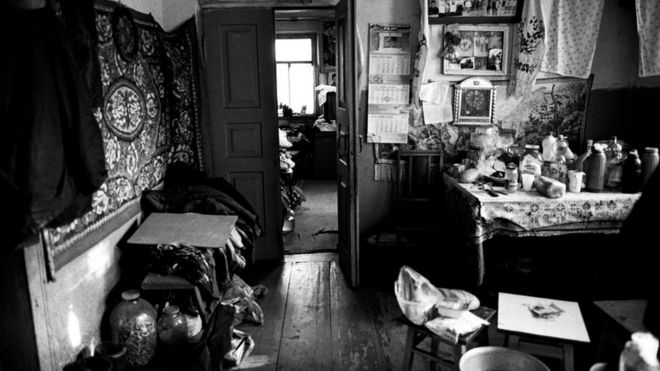 Jerzy Wierzbicki
Jerzy Wierzbicki
Suspecting that it would turn out to be much longer, they threw some possessions into their Zaporozhets car and drove to another village, Borodianka. There they were washed in cold water by military police, and Ivan was told he would now be employed as a construction worker.
Two years later, they were finally allowed back into Parishev. They have stayed there ever since, despite being inside the exclusion zone. The village and surrounding forest have a handful of other residents but the area is largely empty.
Visitors to the exclusion zone can measure changes in radiation and exposure to it with a dosimeter. At Ivan and Maria's home 30 years on, the reading is very low, in fact below what is considered the safety limit.
Average readings in the zone range from 0.9 microsieverts per hour some distance from the plant to 2.5 microsieverts near by.
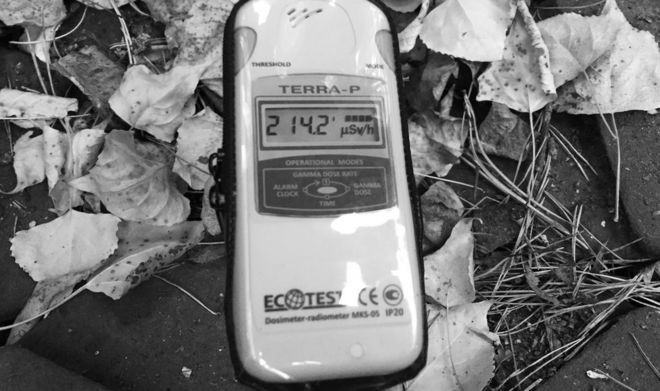 Jerzy Wierzbicki
Jerzy Wierzbicki
Where a high level is recorded, like the 214.2 microsieverts per hour above, it is dangerous to stay for even a few minutes.
The dosimeter recorded that reading near the town of Pripyat on highly radioactive equipment used after the 1986 meltdown.
 Jerzy Wierzbicki
Jerzy Wierzbicki
Among the detritus at the storage area outside the abandoned town of Pripyat, are most of the vehicles and other heavy equipment used in the days after Chernobyl's number four reactor exploded.
The above image shows a Russian Zil truck, tangled up with other metallic scrap.
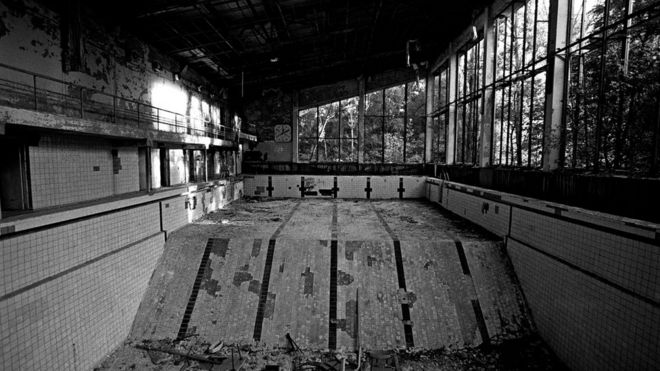 Jerzy Wierzbicki
Jerzy Wierzbicki
Pripyat itself is a ghost town. Opened in 1970 as a modern, Soviet town for nuclear workers, it became home to 50,000 people. This is the scene at Azure swimming pool, next to the town's primary school number three.
Those residents were cleared from the town in a major operation some 36 hours after the catastrophe.
The roof of Chernobyl's number four reactor was blown off at 01:24 on 26 April. Pripyat lies just 4km away.
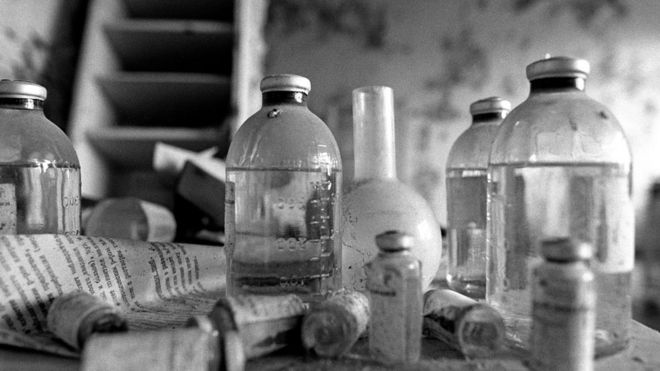 Jerzy Wierzbicki
Jerzy Wierzbicki
Pripyat stands untouched, preserved as it was on 27 April 1986.
The doctor's office, complete with full glass bottles of vaccines and medicines, lies deserted at Medical Centre number 26.
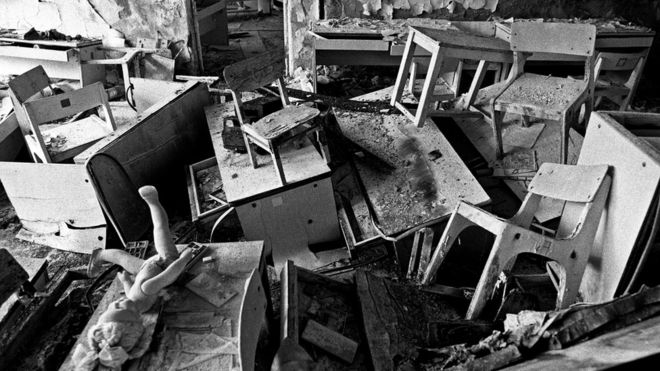 Jerzy Wierzbicki
Jerzy Wierzbicki
At the abandoned Little Bear kindergarten in Pripyat, desks and chairs are piled on top of one another and discarded toys lie in the dust.
Before the hurried evacuation of the town, residents were kept in the dark about the nuclear accident a short distance away.
In all, 116,000 people were moved out of the area declared an exclusion zone.
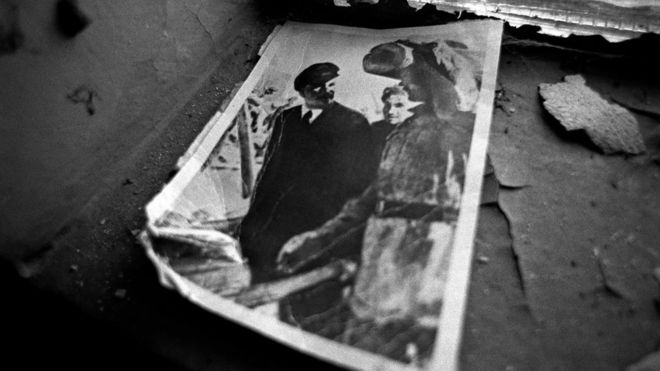 Jerzy Wierzbicki
Jerzy Wierzbicki
Discarded on the floor of one flat in Pripyat is a small black-and-white photo of Vladimir Lenin.
It is yet another sign of a world that vanished decades ago.
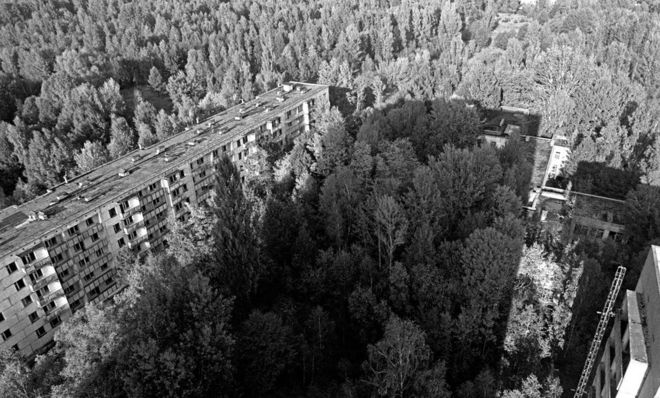 Jerzy Wierzbicki
Jerzy Wierzbicki
Pripyat was a typical Soviet town, full of uniform, concrete blocks of flats, little vegetation and poorly-constructed, potholed roads.
This is the view from the 15th floor of the town's tallest block of flats.
With its people gone, slowly and constantly, the nearby forest has invaded the streets and the spaces between the flats.
The only residents now are wild animals, whose numbers have increased dramatically. Observers speak of the return of species that had been considered extinct in the area.
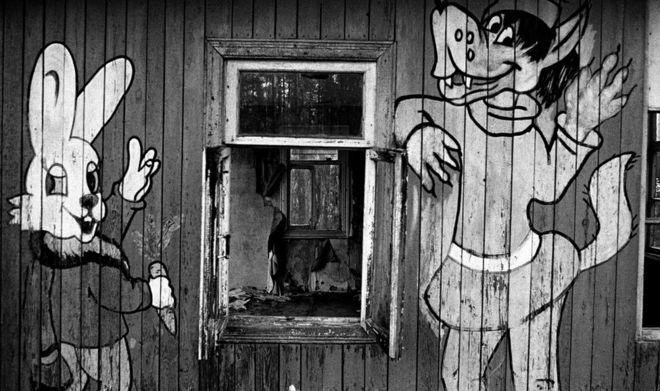 Jerzy Wierzbicki
Jerzy Wierzbicki
Not far away from Chernobyl is a small, deserted recreation resort of dozens of wooden summer houses.
Two characters from an iconic Soviet-era children's cartoon, Nu Pogodi! (Just you wait!), are still visible, painted on the timber wall of one of the houses.
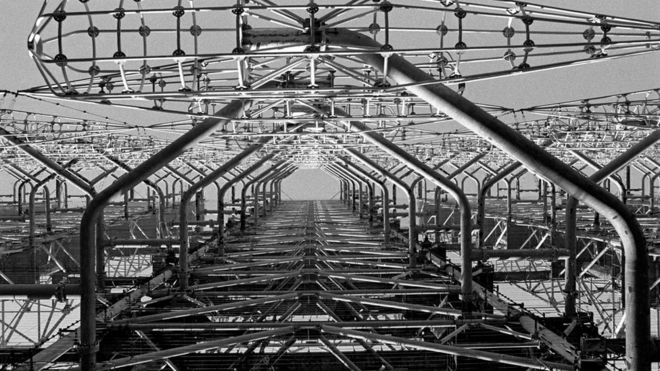 Jerzy Wierzbicki
Jerzy Wierzbicki
A large military installation was built several kilometres from the plant partly to protect Chernobyl. Towering over the military camp, deep in a forest, is the Duga-3 radar antenna.
It was eventually shut down three years after the nuclear disaster.
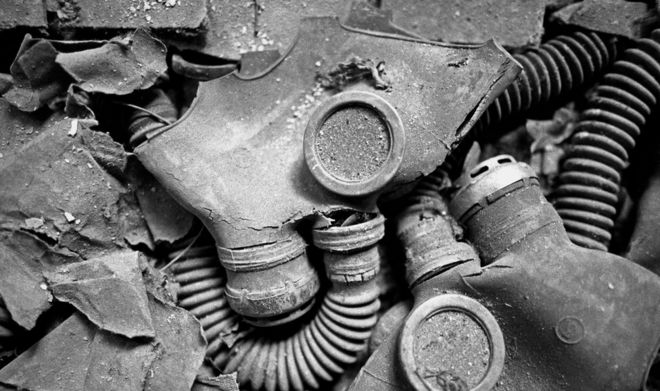 Jerzy Wierzbicki
Jerzy Wierzbicki
Picking up discarded items in the exclusion zone is strictly prohibited, especially the gas masks used by workers known as "liquidators" in the aftermath of the disaster.
An estimated 600,000 people were drafted in as liquidators to help fight the fire and clean up the area.
A World Health Organization report in 2005 estimated that 4,000 people would die of radiation exposure. Guides in the exclusion zone prefer not to talk about the effect on local health but Ukraine's government estimates that only 5% of the liquidators still alive are in good health.
At the nuclear plant today, workers are not allowed to put anything on the floor. Everybody is checked regularly for radiation at special dosimeter stations.
The concrete and steel sarcophagus still in place over reactor number four is now in a poor state and an international team hope to replace it in 2017. Once the €2bn giant arch is wheeled into place, work will begin on dismantling the old structure and removing the waste inside.
All images by photographer Jerzy Wierzbicki.

No comments:
Post a Comment